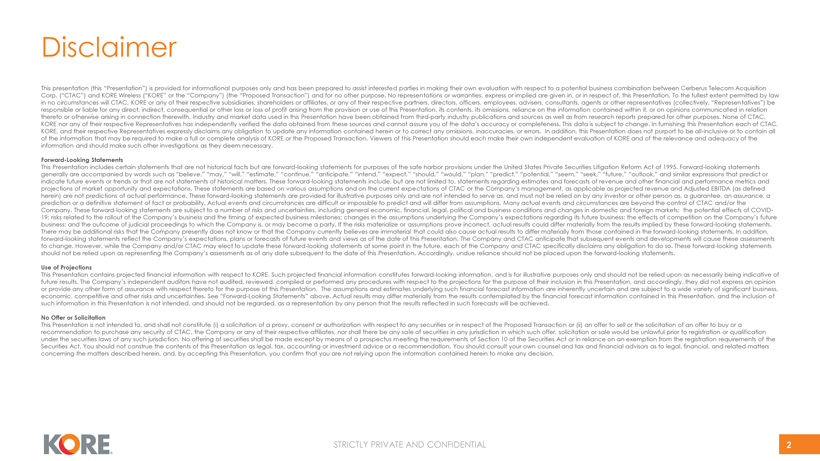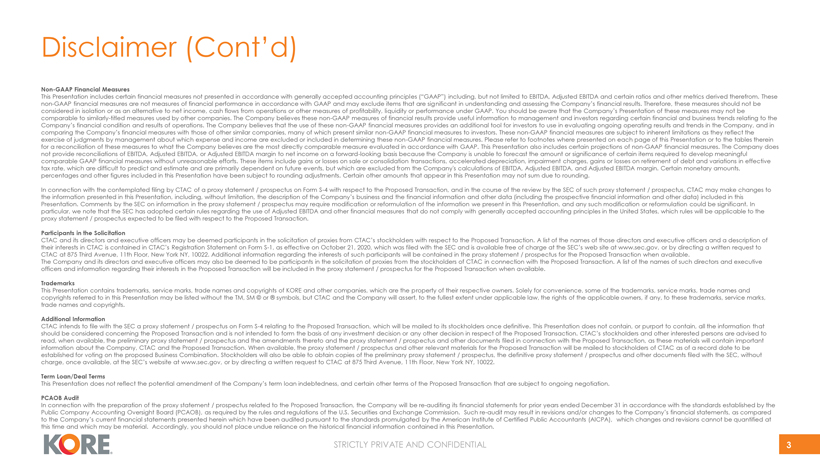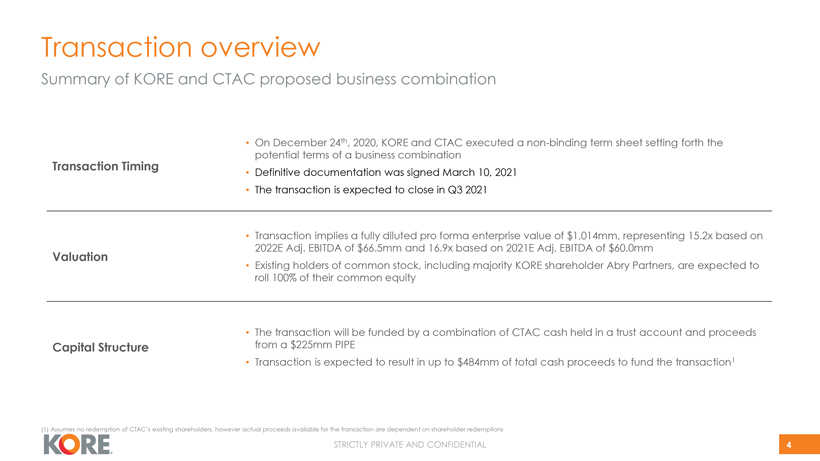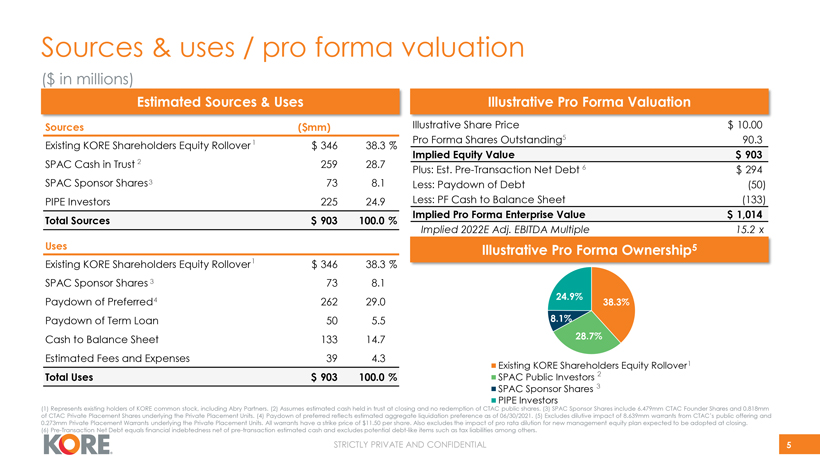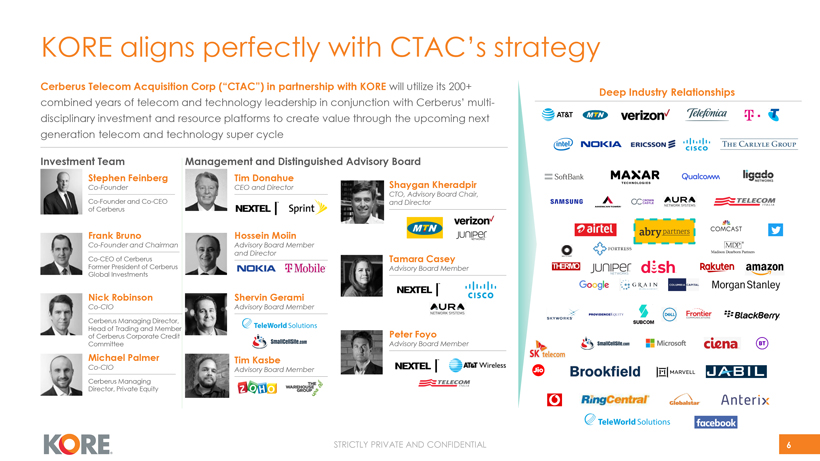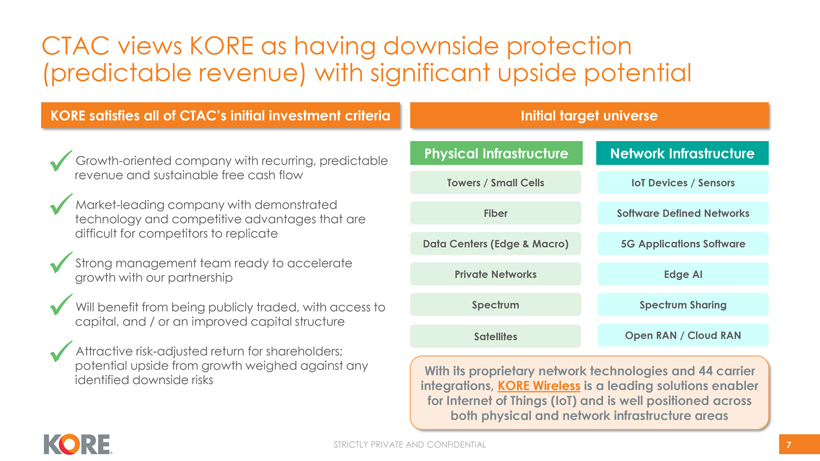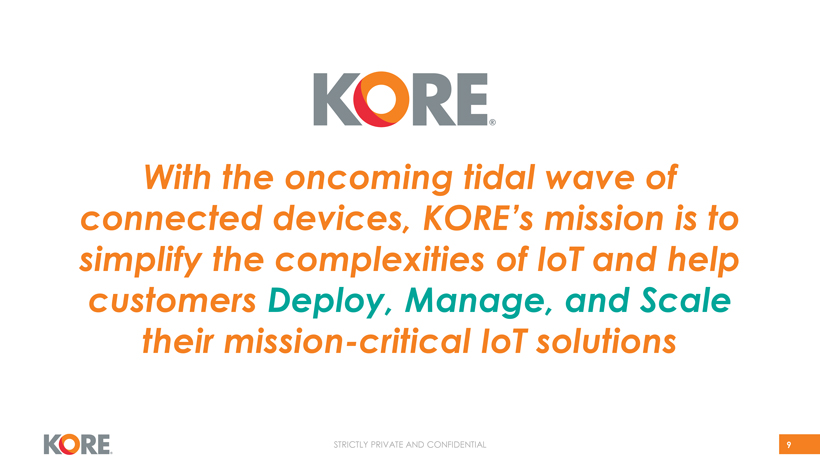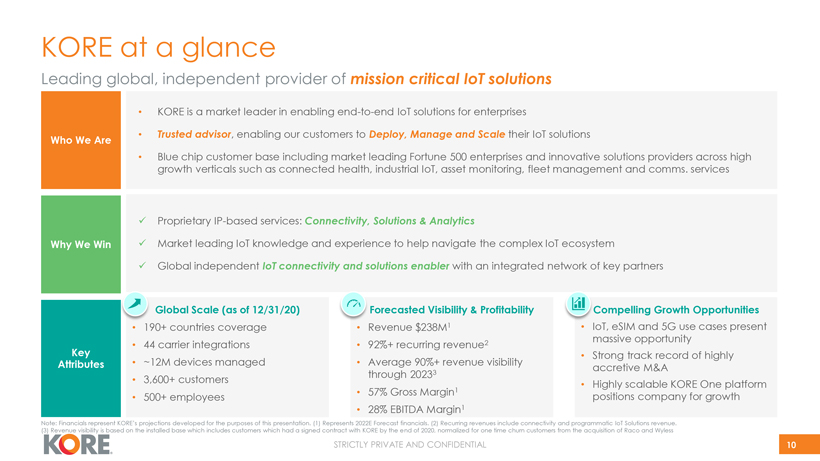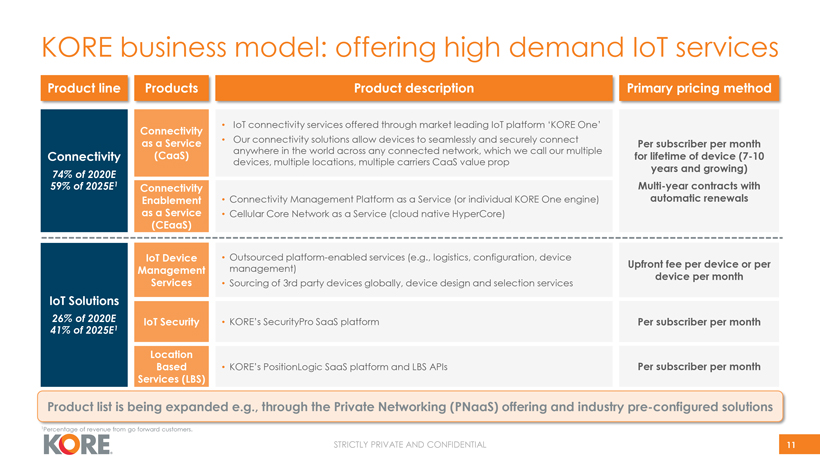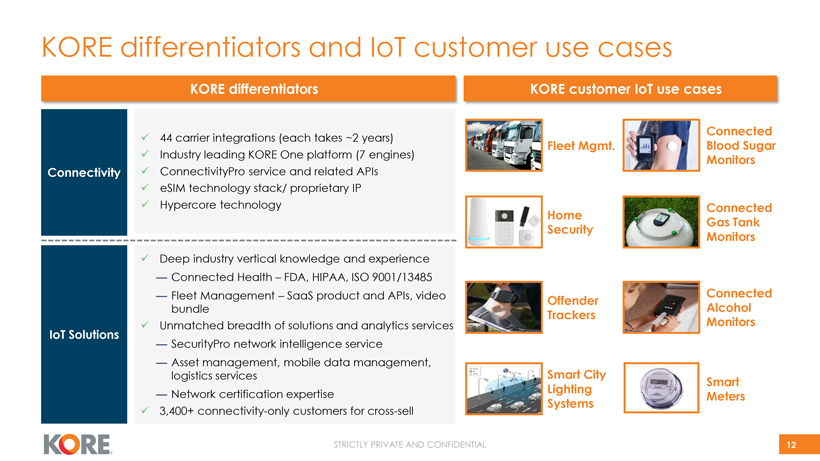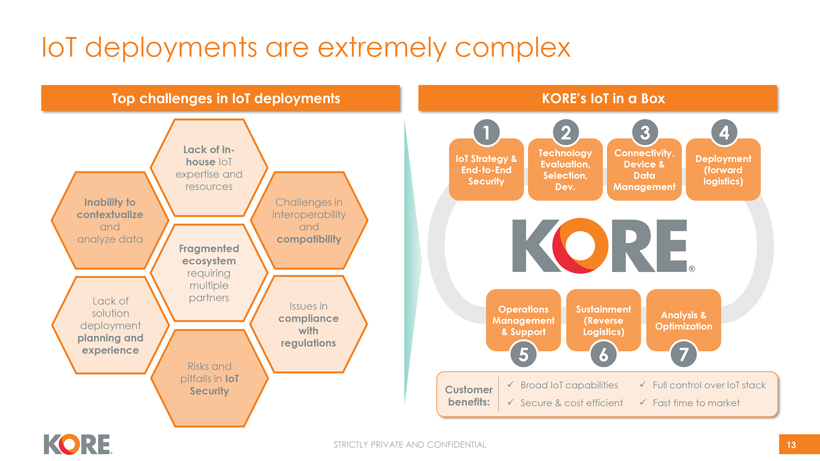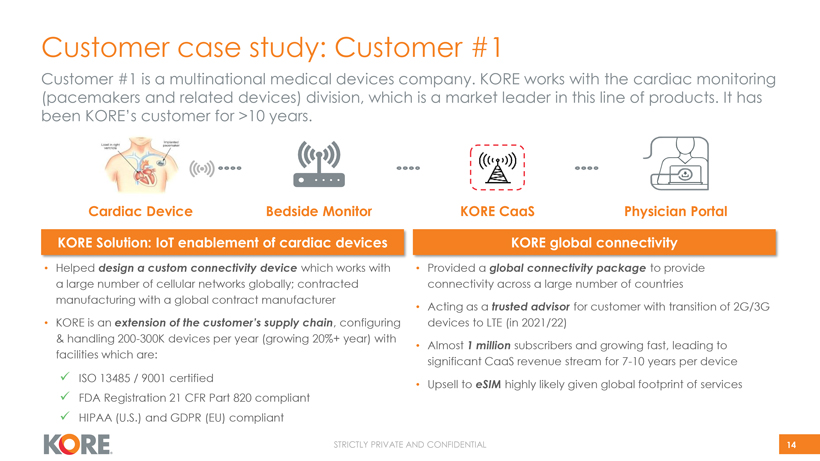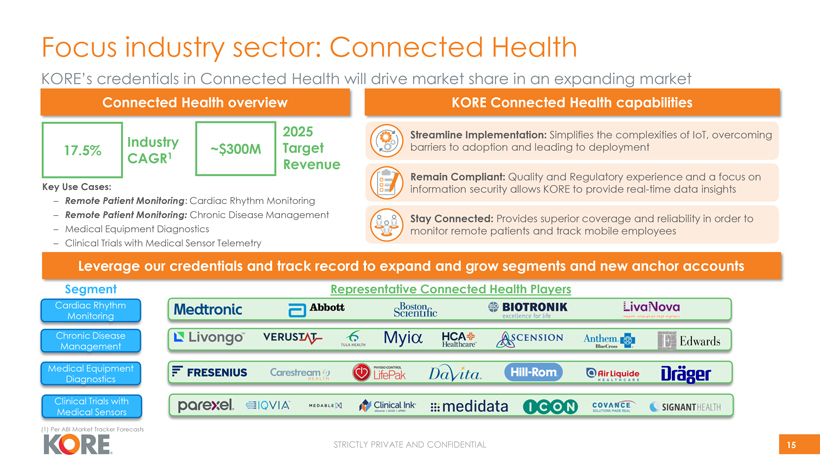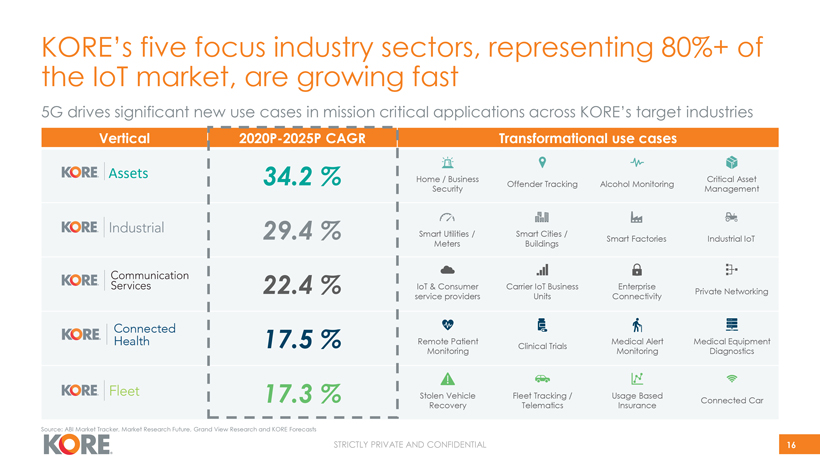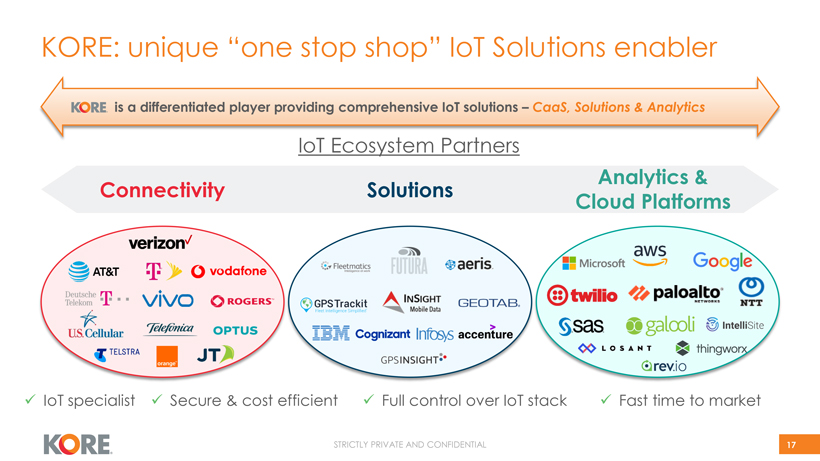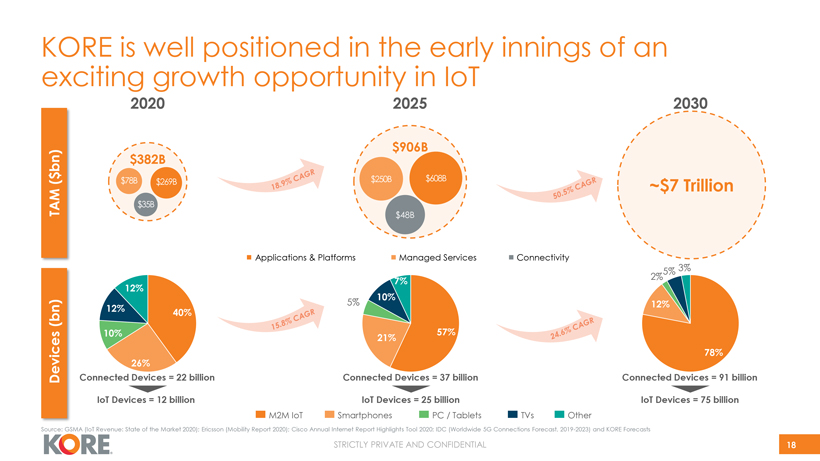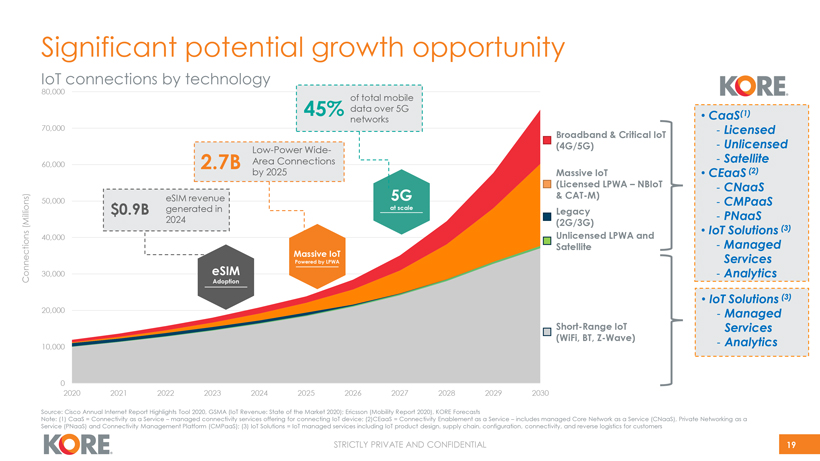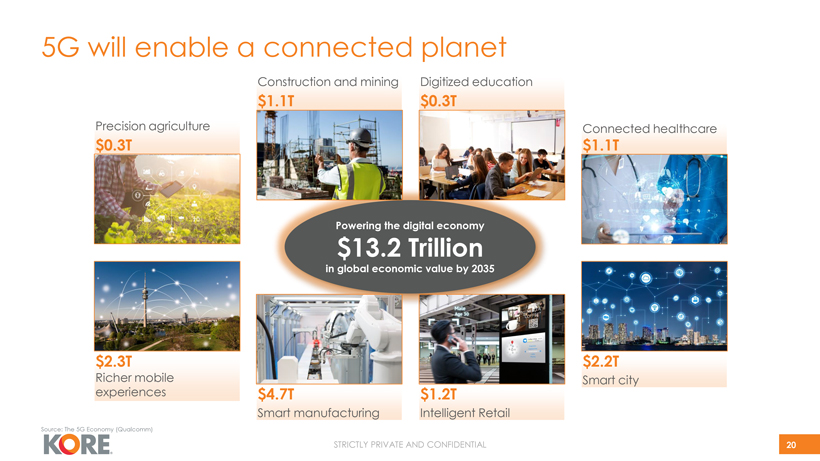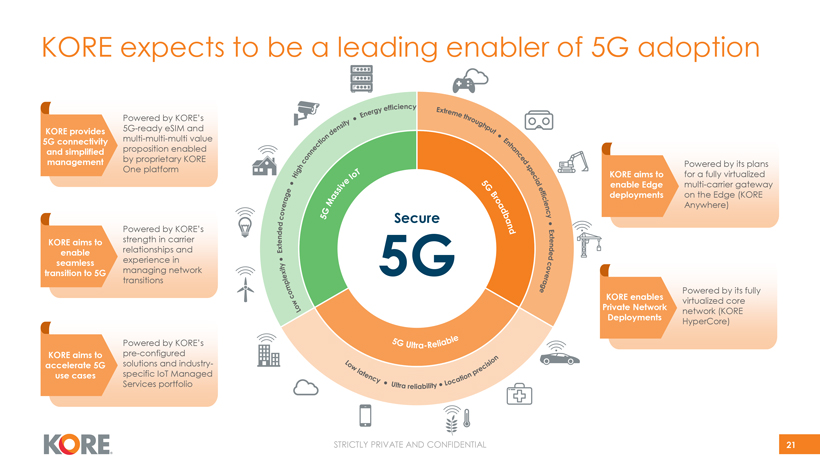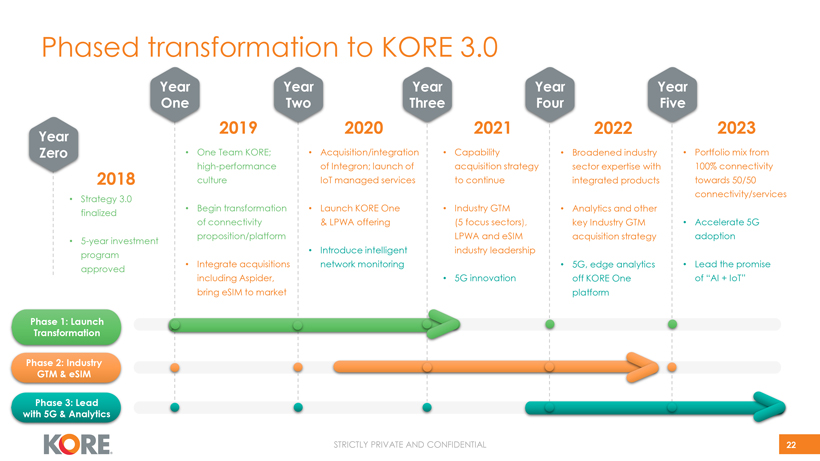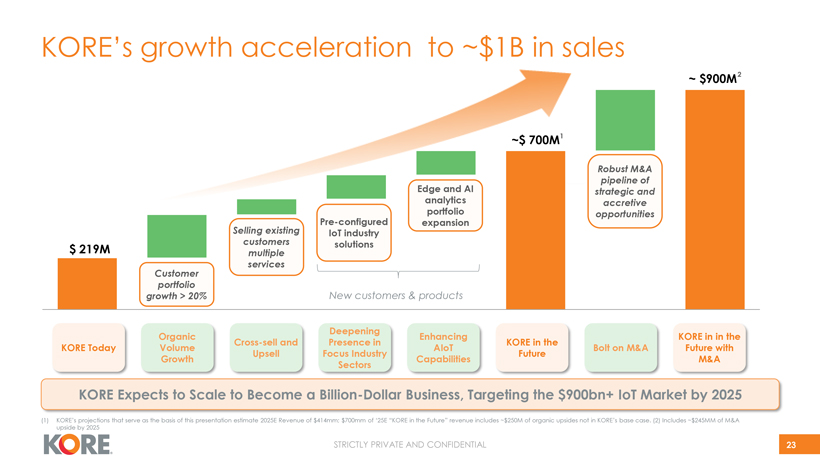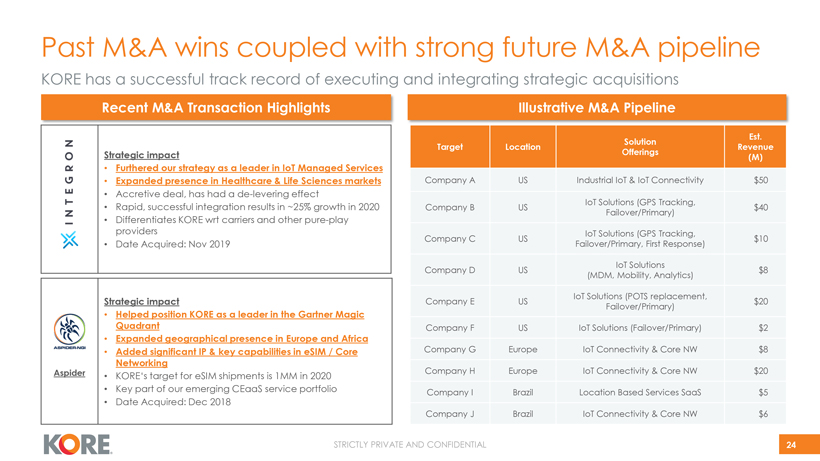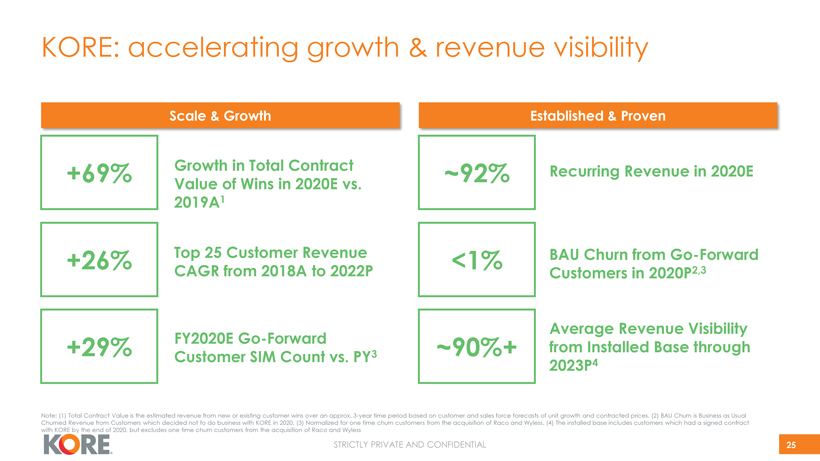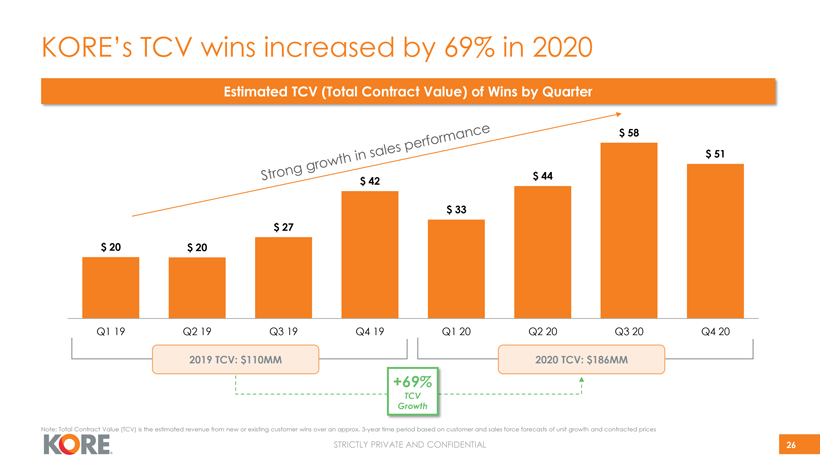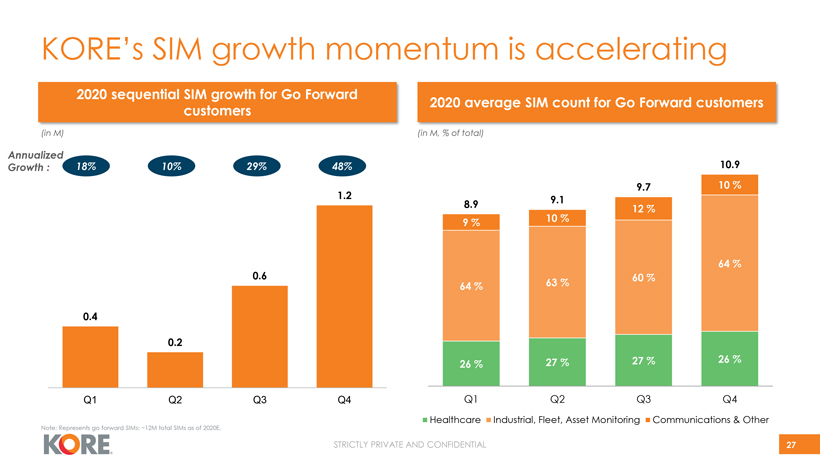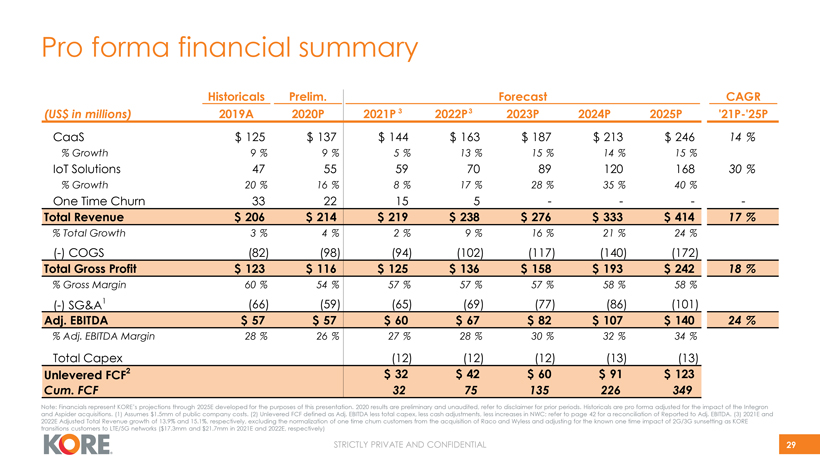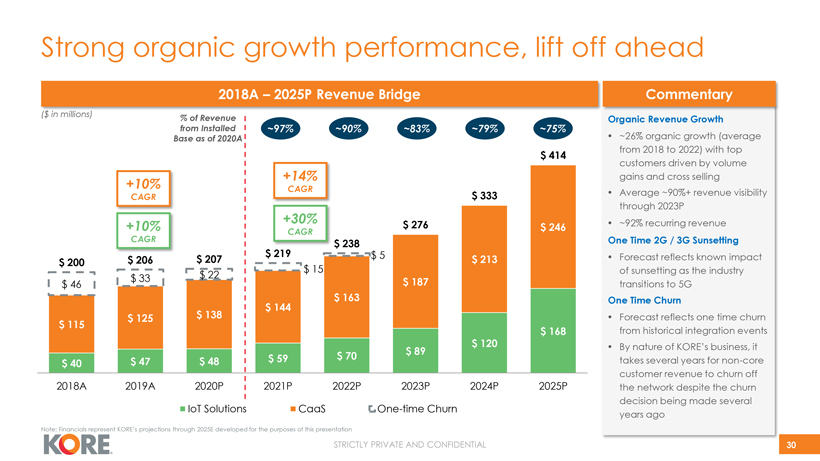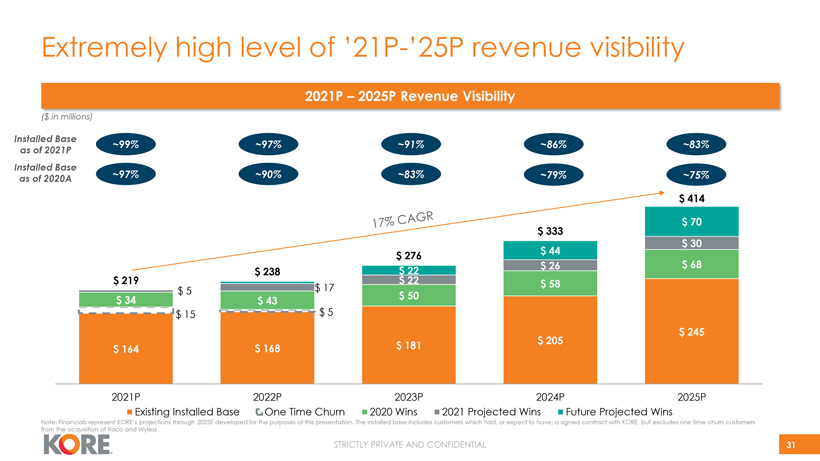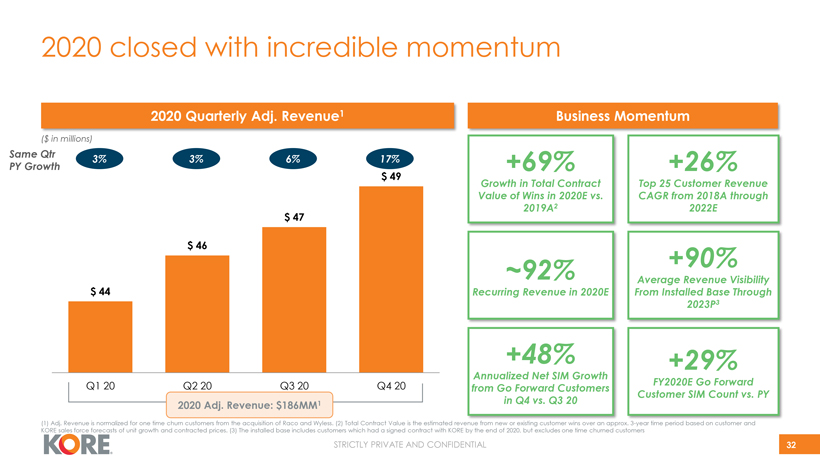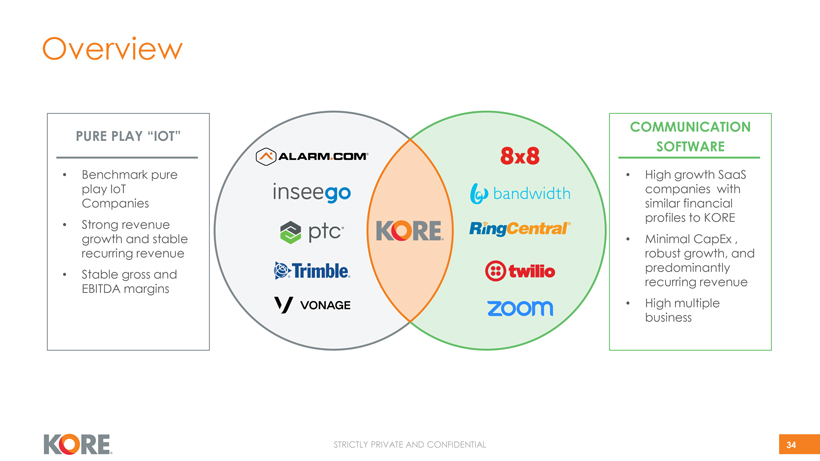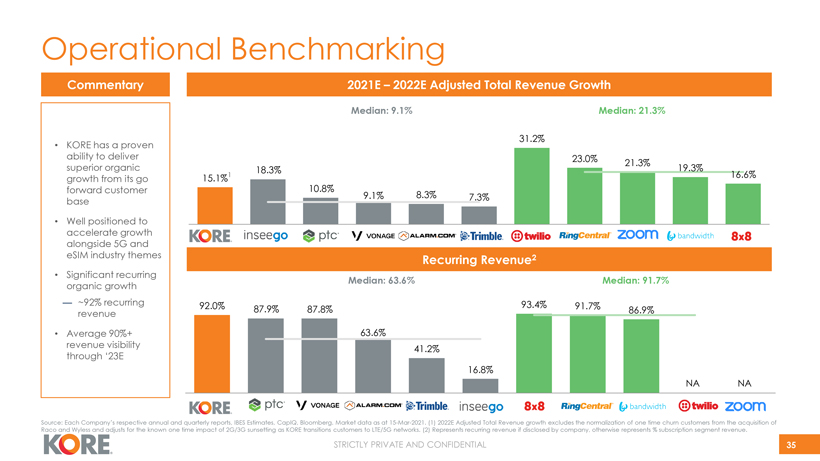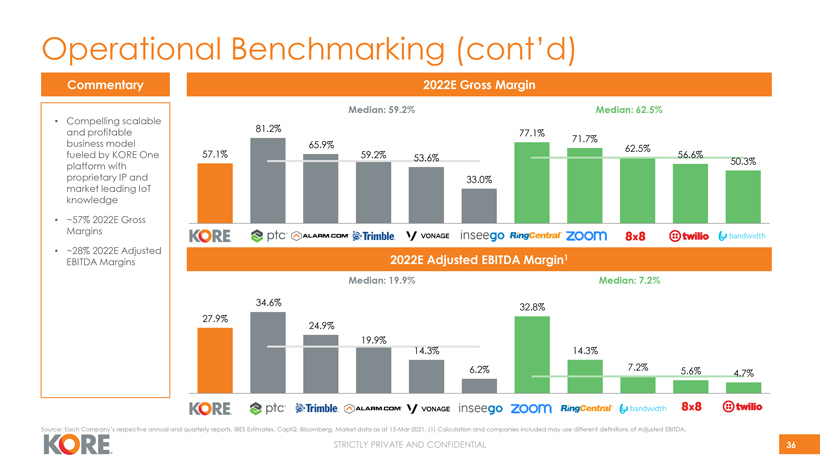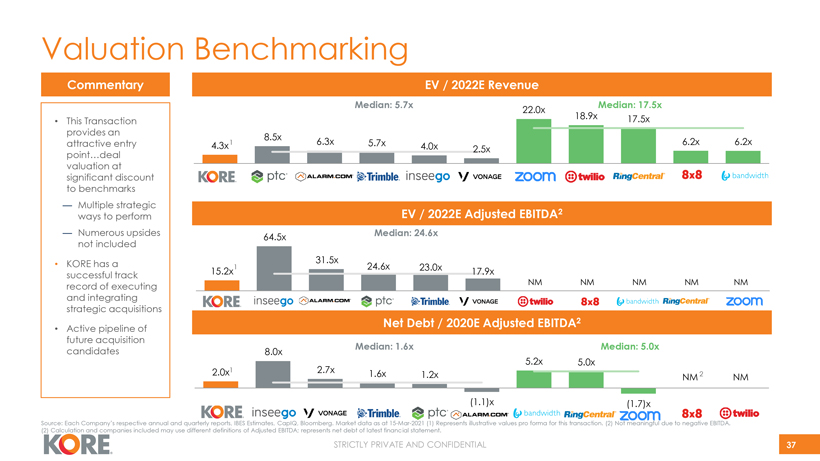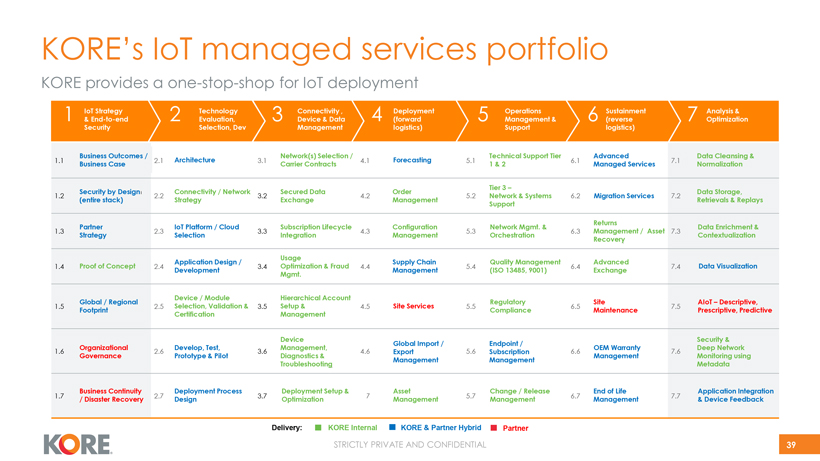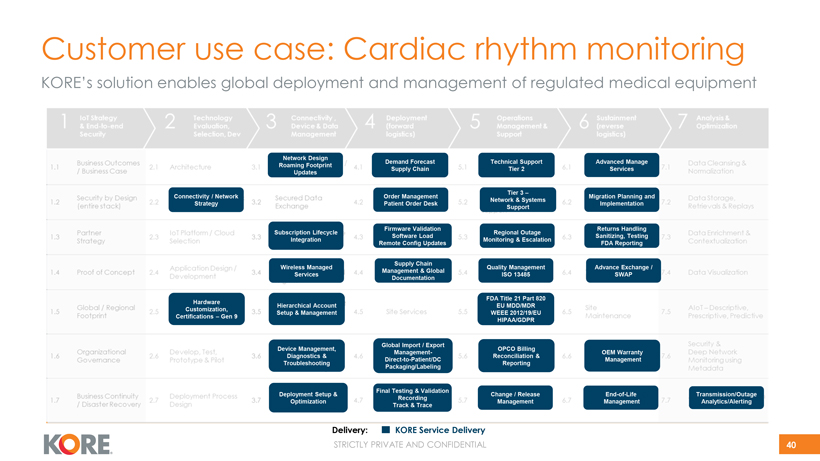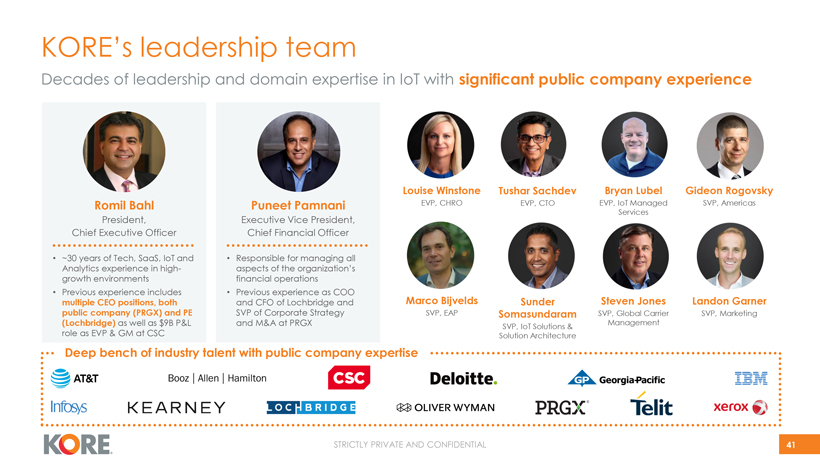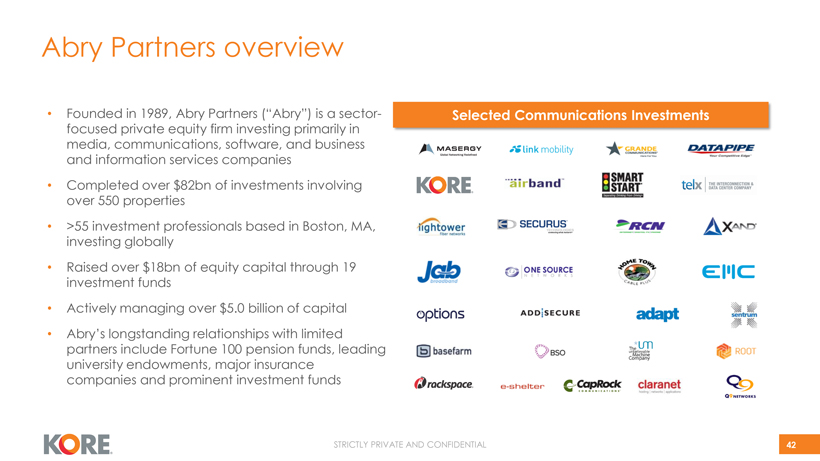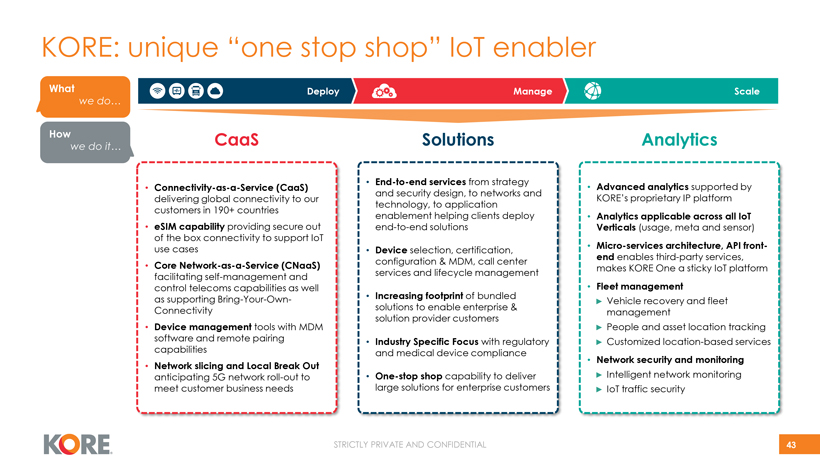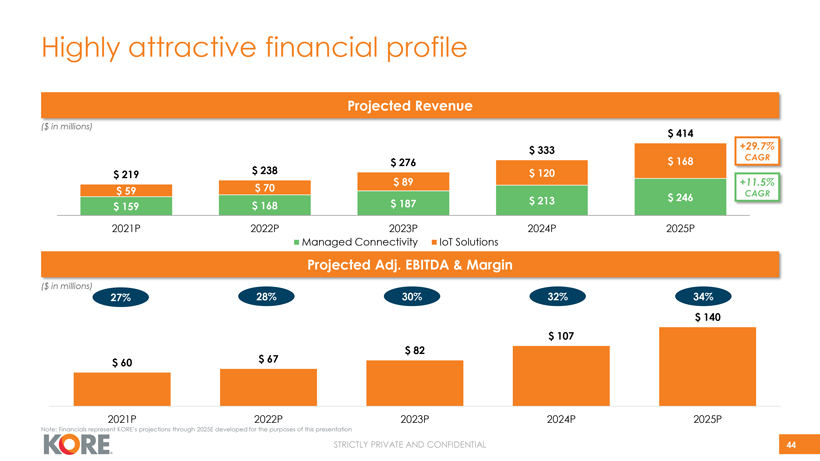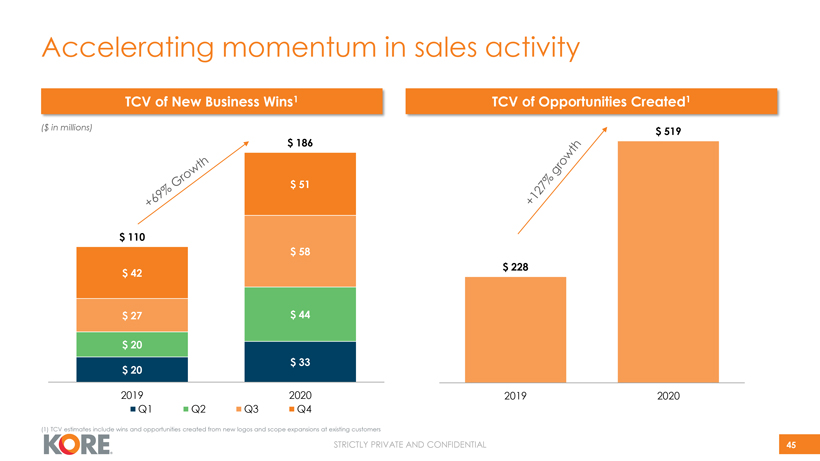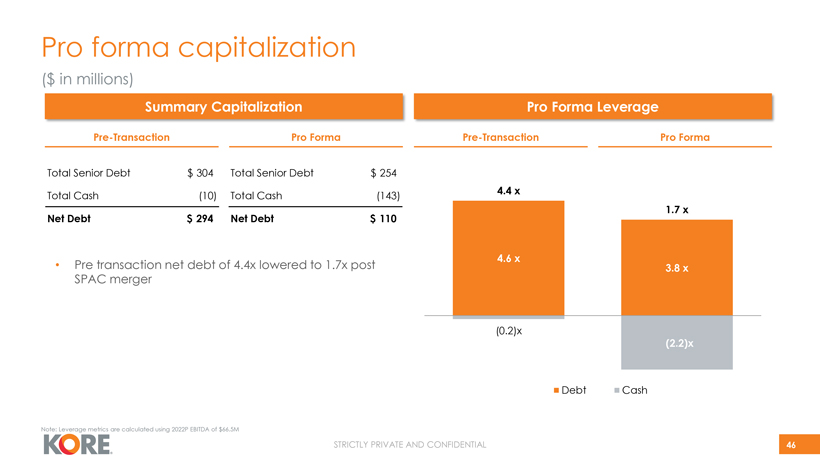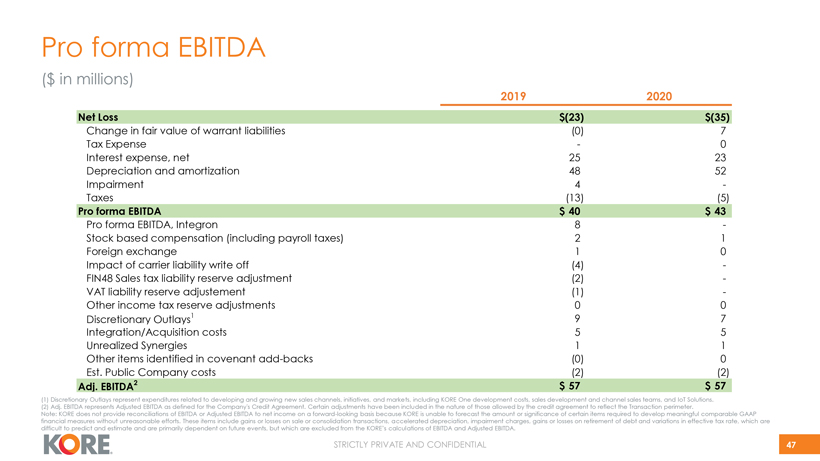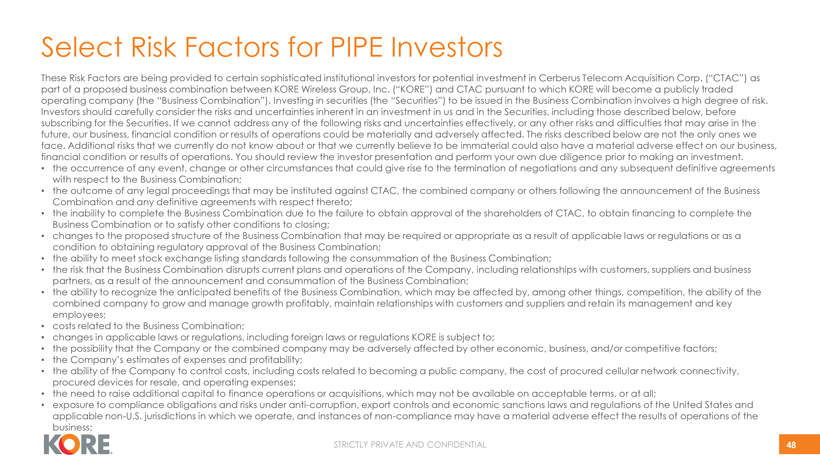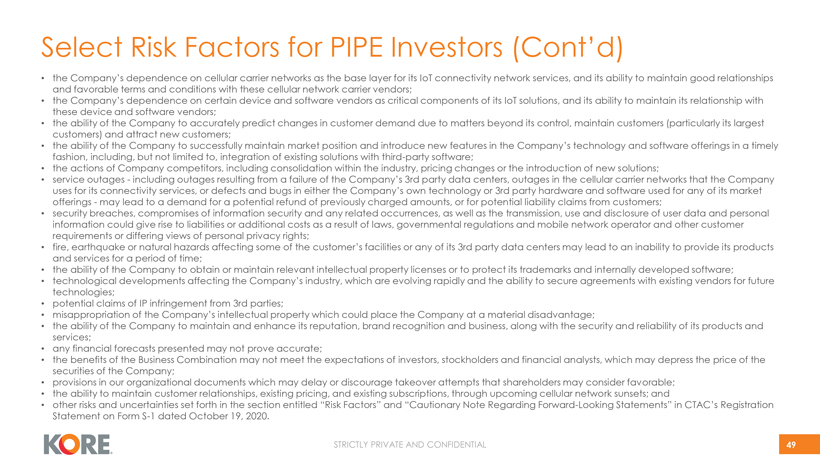We uniquely are getting ready to play in 5G five different ways, and that’s the next stage. There are five ways, but before I get into the five ways, let me hit the three big chunks of 5G, the way we look at 5G. So, if you look at the inside circle there in 5G, there’s massive IoT, in green, there’s the…by the way, massive IoT is where LPWA, which I was just talking about, NB-IoT, CATM technologies, all of those are going in there. Then there’s 5G broadband. That’s where autonomous, high-bandwidth type use cases, autonomous driving, that’s where that will go. And then the ultra-reliable, sometimes called critical IoT, that’s where great precision, very, very low latency, high-quality networks will be required for things like robotic surgery. In fact, you’ll probably just have a private network around surgery centers in the future, a 5G type private network, so you’re’ never dependent on anybody outside for any blips, any latency, any wiggle in the network.
So, what are our propositions now? Let’s go across the five. First, at the top left, look at current CAS proposition, our multi-multi-multi proposition will be more powerful than ever before. Our 5G-ready eSIM will make it easy for customers to just connect their products and ship them everywhere in the world.
Perhaps more importantly for our customers…and that’s our second point there…understanding their use cases and guiding them is key. We’ve served over 10,000 customers lives a day, 3600 today. We know what they do. We’ve seen a thing or two. So, we can guide them to which part of this 5G spectrum they should be thinking about and make it as seamless for them as possible. Because we handle the devices, the logistics, the managed services, and support, we will seek to make 5G very easy to adopt. Simply put, our mission is to be the number one enabler, or onramp, of 5G adoption in the world.
Two other things on the right where we will play. Edge Compute is coming at us hard and fast. The Edge Cloud, if you heard that term, is going to become real. The notion of basically more intelligence out closer to the edge. For that, our KORE anywhere multicarrier gateway plans fit right into that. We will be able to download and upload all of that over the air, maintenance required for the Edge Cloud, our customers needing to deploy software. We are very excited about that. It’s in innovation stages today in what we call KORE Labs, but very exciting. And then finally, Private Networking. We’ve already mentioned that several times, robotic surgery application, for example. Our hyper KORE, our Cloud native KORE networks will work right into the private networking area. A very, very exciting decade, or decade and a half of IoT coming at us and providing us huge tailwinds for the future.
Let’s now go to the next chart, which talks a little bit about our five-year transformation and how we’ve been thinking about that here at KORE. Before I just jump into the transformation to 3.0 though, you might wonder, what was 1.0, what was 2.0. KORE 1.0 to me, I define it as when KORE started, 20 years ago almost. The term IoT wasn’t even used. It was M2M, machine-to-machine, and KORE became, first with Rogers and then with AT&T, sort of a North America only, connectivity only, M2M player.
Page 14 of 19


